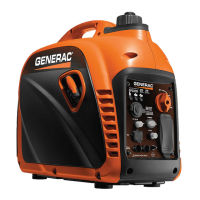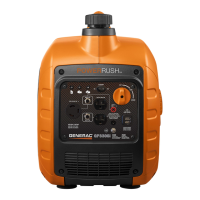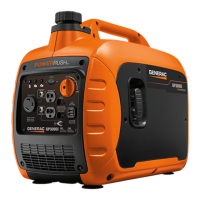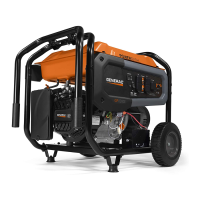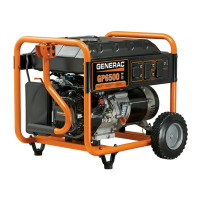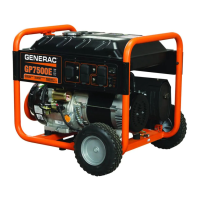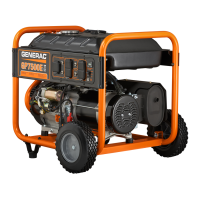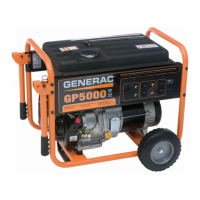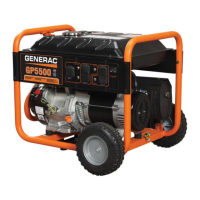GENERAL INFORMATION
SECTION 1.3
BRUSHLESS, CAPACITOR EXCITATION SYSTEM
OPERATION
STARTUP:
When the engine is started, residual magnetism from
the rotor induces a voltage into (a) the stator AC
power windings, (b) the stator excitation or DPE wind-
ings. In an “On-speed” (engine cranking) condition,
residual magnetism is capable of creating approxi-
mately one to three Volts AC.
ON-SPEED OPERATION:
As the engine accelerates, the voltage that is induced
into the stator windings increases rapidly, due to the
increasing speed at which the rotor operates.
FIELD EXCITATION:
An AC voltage is induced into the stator excitation
(DPE) windings. The DPE winding circuit is completed
to the capacitor where the charging and discharging
causes a voltage to be induced back in to the rotor
which will regulate voltage. The greater the current
flow through the rotor windings, the more concen-
trated the lines of flux around the rotor become. The
more concentrated the lines of flux around the rotor
that cut across the stationary stator windings, the
greater the voltage that is induced into the stator
windings. Initially, the AC power winding voltage is
low, but as the capacitor is charged and discharged
this relationship between the rotor and the capacitor
is what will regulate voltage at a desired level.
AC POWER WINDING OUTPUT:
A regulated voltage is induced into the stator AC
power windings. When electrical loads are connected
across the AC power windings to complete the circuit,
current can flow in the circuit.
PART 1
Page 17
CAPACITOR 28µf
WIRE 2
WIRE 6
RED (R2 – 33)
BLUE (R1 – 44)
BROWN (L2 – 22)
WHITE (L1 – 11)
WIRE 2
WIRE 6
11 22 33 44
CAPACITOR 47µf (440 VAC)
Figure 4. Alternator Configuration A
Figure 5. Alternator Configuration B
A
B
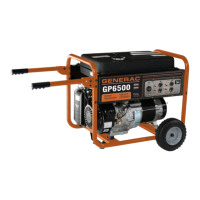
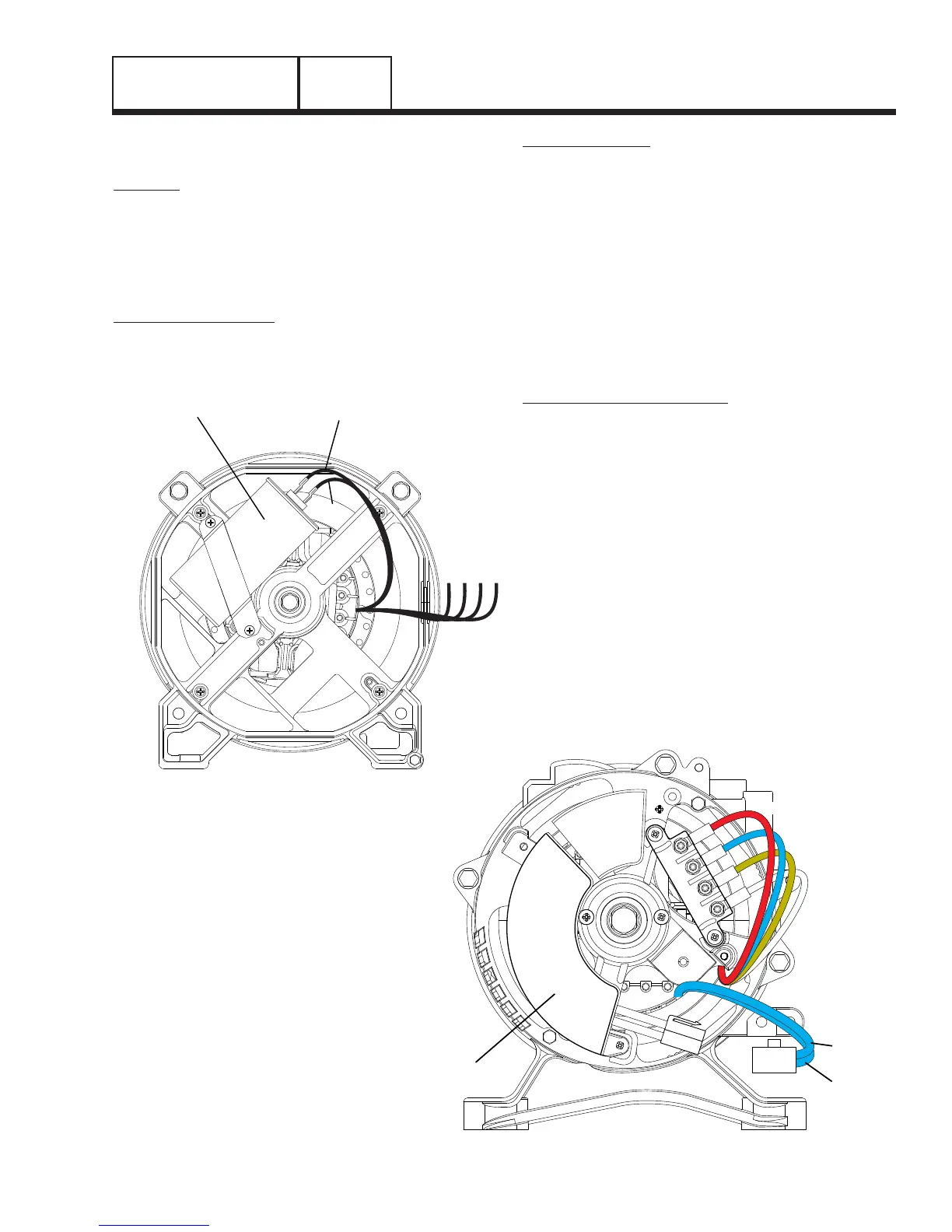